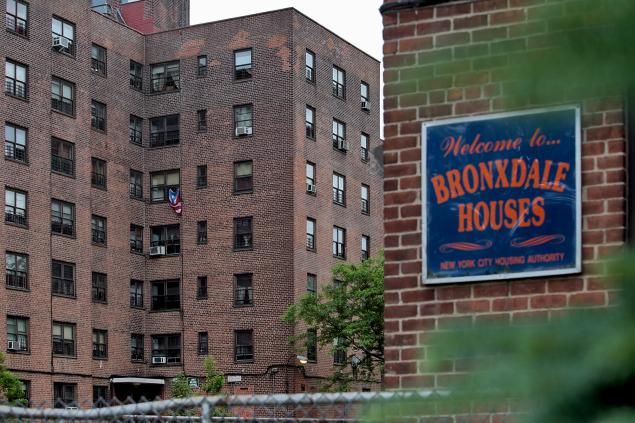
Bloomberg Talks Housing | More Neighborhood Data Needed | Big Banks Pay

Bronxdale Houses remains a low-income residential community in Bronx. (credit: AP/Bebeto Matthews).
- Mayor Bloomberg says New York City’s lack of affordable housing is a ‘good sign’ of a vibrant economy because ‘more people want to live here.’ Advocates slammed the mayor’s comments as ‘absurd’ and insensitive to people being squeezed out of their homes by rising rents.
- Could free rent bring Oakland’s downtown to life? The city of Oakland wants to emerge as the Brooklyn to San Francisco’s Manhattan. It’s getting there. Thanks to a hipster exodus from more expensive San Francisco, Palo Alto, and Silicon Valley, a lot of tattooed millennials are riding around downtown Oakland on fixed-gear bikes. The bar and restaurant scene is taking off.
- Report: Illegal NYC homes house ex-prisoners. Hundreds of poor New Yorkers desperate for housing, many of them formerly incarcerated, are using public assistance stipends to pay for shelter in unregulated and illegally subdivided, violations-ridden buildings - generally located in the city’s poorest neighborhoods, according to a report released Thursday.
- The neighborhood data portal every city needs. As the open data movement has matured, public city-wide vital stats have come to feel more like a citizen’s right than a civic innovation. This is where things should head next: Take all of that data, map it, connect the dots between public health, land use, economics, education, crime and housing. And portray those patterns - and the inequality they often reveal - down to the neighborhood level.
- Closings at 200 East 79th; Slope hospital expansion update. Skyline Developers’ condo at 200 East 79th Street avoided the limelight, instead opting for minimal advertising and a quiet sales launch. We saw the sales office almost a year ago, and it sold out in less than four months after sales started, but reps waited for closings to start until spreading the word. Now that closings are underway, the first residents are moving into the 39-unit, Cetra/Ruddy-designed building.
- Widow’s bankruptcy case poses risk to rent-stabilized tenants. The issue, pending before the United States Court of Appeals for the Second Circuit, is whether a rent-stabilized lease can be treated as an asset in a personal bankruptcy, just like a car or a piece of land, and used to pay off creditors.
- New York has more homeless than it has in decades. What should the next mayor do? If all the homeless people who now live in New York City used the stadium for a gathering, several thousand of them would have to stand. More people in the city lack homes than at any time since . . . It’s hard to say exactly. The Coalition for the Homeless, a leading advocate for homeless people in the city and the state, says that these numbers have not been seen in New York since the Great Depression.
- Existing homes sales fall in September as housing becomes less affordable. Sales of previously owned homes fell 1.9% in September from a month earlier, according to the National Association of Realtors, as the summertime spike in mortgage rates pressured activity and housing affordability decreased
- Federal housing chief holds banks to account. Two years ago, the Federal Housing Finance Agency sued 18 banks for losses on $200 billion in private-label mortgage bonds purchased by Fannie Mae and Freddie Mac. That strategy is now paying off. JPMorgan Chase & Co. is negotiating a $13 billion settlement with the U.S. government that would feature a $4 billion payment to the FHFA. Today, Bloomberg News reports that Bank of America Corp. might pay the FHFA at least $6 billion for dodgy bonds issued before the crisis.
- Food truck builder designs mobile homeless shelter. After completing the prototype—which cost him about $500 to produce—he and his partner, businessman Jeff Norton, are going to take the pod to local shelters to see how they can be used.


